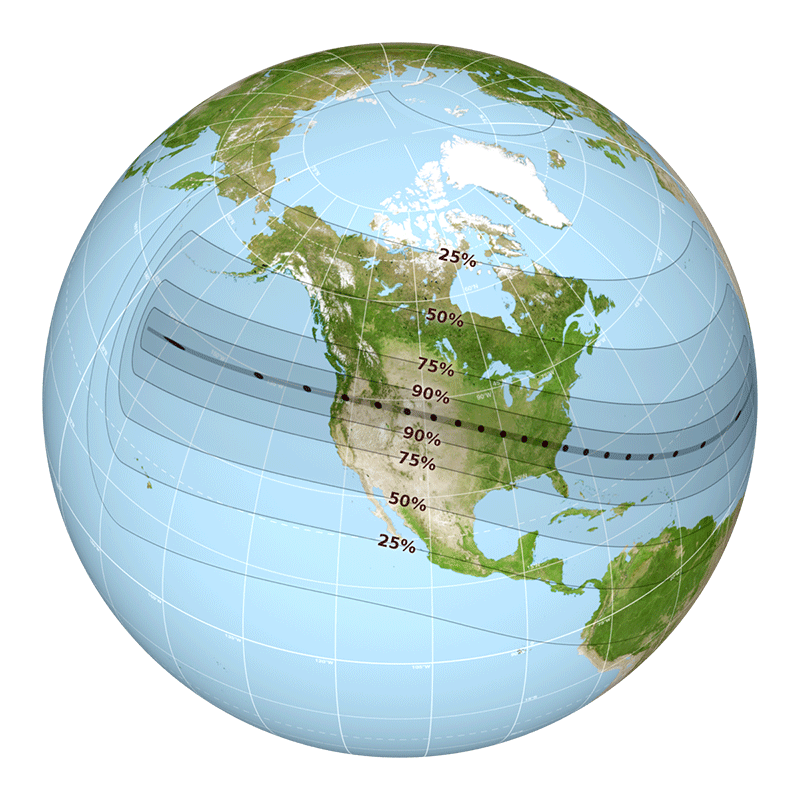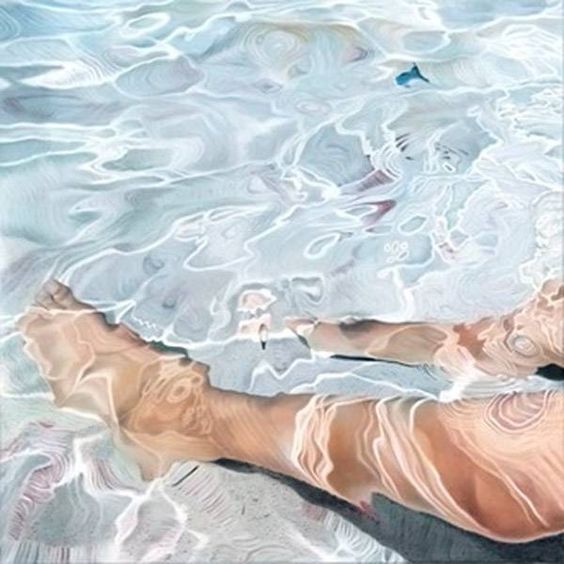The coming solar eclipse is transfixing Americans and the scientific community across the country.
The event will be a rare and significant celestial movement that will encourage ordinary people to take a few moments from their lives and experience a once-in-a-lifetime cosmic event––a mind (and light) bending alignment of the Earth, Moon, and Sun.
On August 21st, curious onlookers along a stretch from Oregon to South Carolina will be able to see the Moon completely block out the Sun for a few minutes. Many are doing more than just taking a few moments and will instead hit the road with their friends or families to experience the event.
Many will be able to see a significant amount of the Moon’s transit across (and in front of) the sun no matter where they are in the United States but there’s a very specific path where you can experience the total solar eclipse. When full totality occurs, you’ll only be able to see the Sun’s corona as an eerie halo-like ring around the “invisible” Moon.
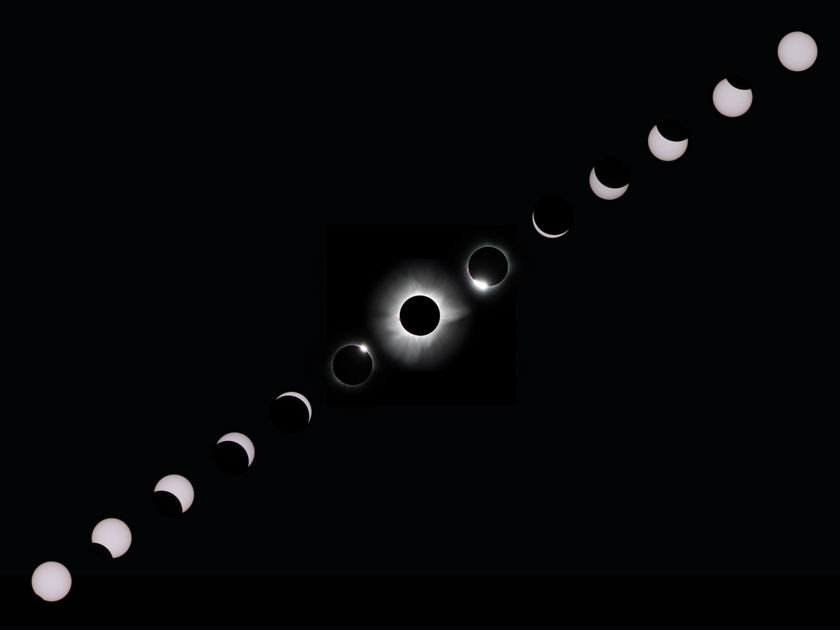
The photo composition above shows an example of a total solar eclipse visible off the coast of Indonesia on March 9, 2016. (Via Planetary Society)
So what exactly is a solar eclipse? A solar eclipse occurs when the moon passes in front of the Sun blocking out light that would usually be hitting a part of Earth’s surface. Solar eclipses are very rare because the Moon has to be in its “new moon” phase between the Sun and the Earth. With the Sun behind the moon, people on Earth can only “see” its dark side which basically makes it invisible.
While “new moon” phases happen every 30 days, the Moon’s tilted orbit around Earth only allows for a perfect circular block of the sun very rarely.
The last time Americans were able to view a total eclipse was 38 years ago but only viewable from a few states.
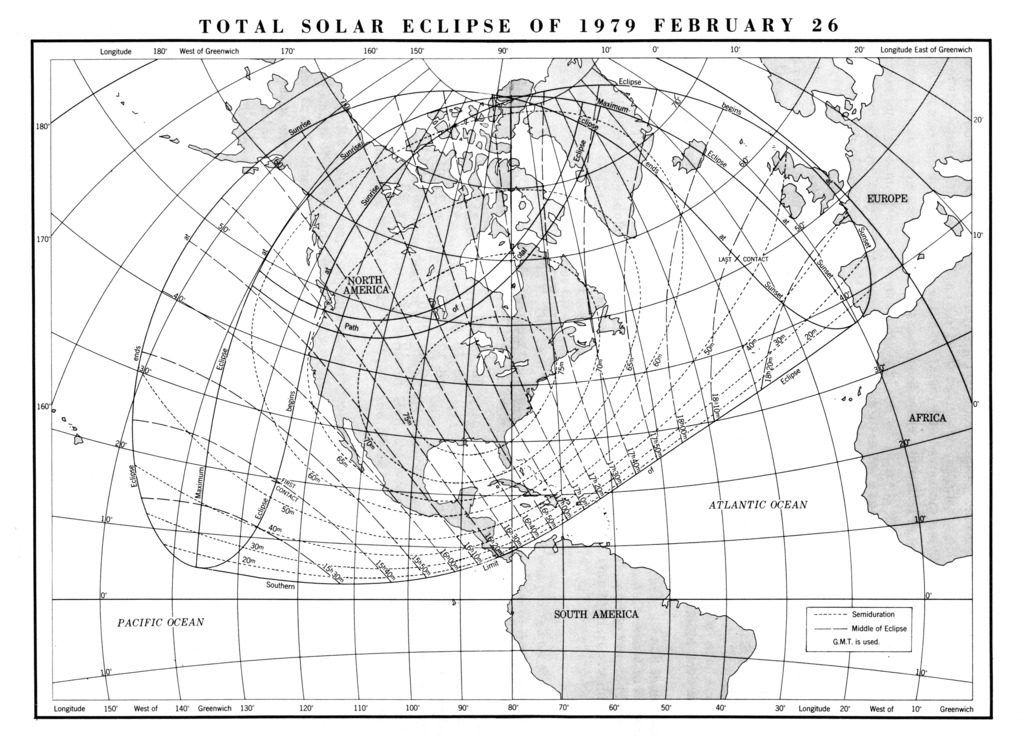
As seen in the graphic above, the most recent total solar eclipse in the United States was in 1979. Totality was visible in, Oregon, Idaho, North Dakota, Washington and Montana. (via NASA)
Every American state will experience the 2017 total solar eclipse at least partially with the Sun no less than 55% hidden. The first city to see the total solar eclipse on August 21st at 10:15 AM Pacific time will be Newport, Oregon. From there, the total eclipse will appear in the east by southeast direction across the country until 2:49PM Eastern time.
The last place it will be visible to anyone is Cape Romain, South Carolina. In total, 14 states lie in the path of totality and those who are in that path will experience a fully vanished Sun for about 2 minutes and 30 seconds.
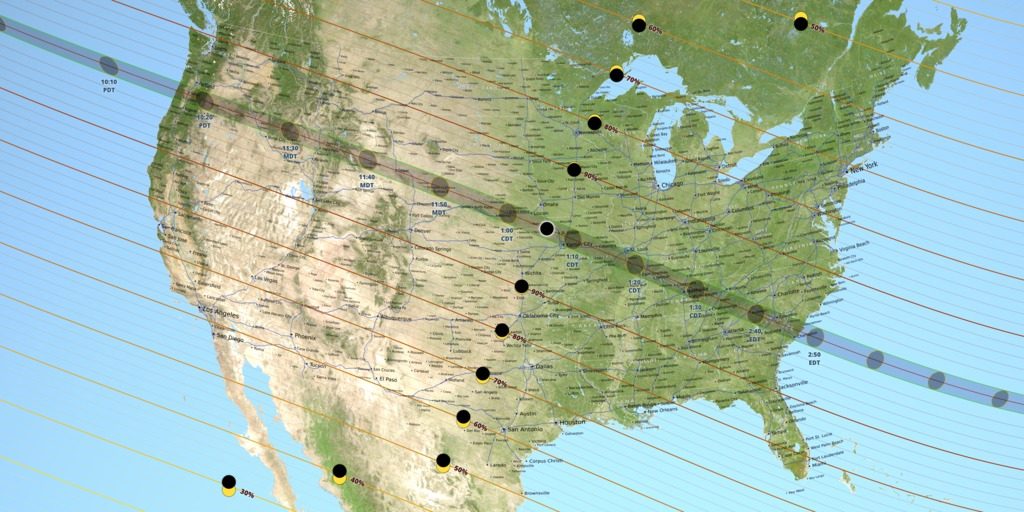
Above is a map of the continental United States provided by NASA showing the path of totality for the August 21, 2017 total solar eclipse.
Whether you plan to stay home and catch the total solar eclipse from home or planning a road trip to go celebrate this rare event, make sure you have NASA-approved eclipse glasses.
“The only safe way to look directly at the eclipsed or partially eclipsed sun is through special-purpose solar filters, such as “eclipse glasses” or hand-held solar viewers,” said NASA. “Homemade filters or ordinary sunglasses, even very dark ones, are not safe for looking at the sun, they transmit thousands of times too much sunlight.
Here’s some more crucial advice for viewing the 2017 total solar eclipse directly from the federal space agency:
- Always inspect your solar filter before use; if scratched or damaged, discard it. Read and follow any instructions printed on or packaged with the filter.
- Always supervise children using solar filters.
- Stand still and cover your eyes with your eclipse glasses or solar viewer before looking up at the bright sun. After looking at the sun, turn away and remove your filter — do not remove it while looking at the sun.
- Do not look at the eclipsed or partially eclipsed the sun through an unfiltered camera, telescope, binoculars, or another optical device.
- Do not look at the sun through a camera, a telescope, binoculars, or any other optical device while using your eclipse glasses or hand-held solar viewer — the concentrated solar rays will damage the filter and enter your eyes, causing serious injury.
- Seek expert advice from an astronomer before using a solar filter with a camera, a telescope, binoculars, or any other optical device. Note that solar filters must be attached to the front of any telescope, binoculars, camera lens, or other optics.
- If you are within the path of totality remove your solar filter only when the moon completely covers the sun’s bright face and it suddenly gets quite dark. Experience totality, then, as soon as the bright sun begins to reappear, replace your solar viewer to look at the remaining partial phases.
- Outside the path of totality, you must always use a safe solar filter to view the sun directly.
- If you normally wear glasses, keep them on. Put your eclipse glasses on over them, or hold your handheld viewer in front of them.

